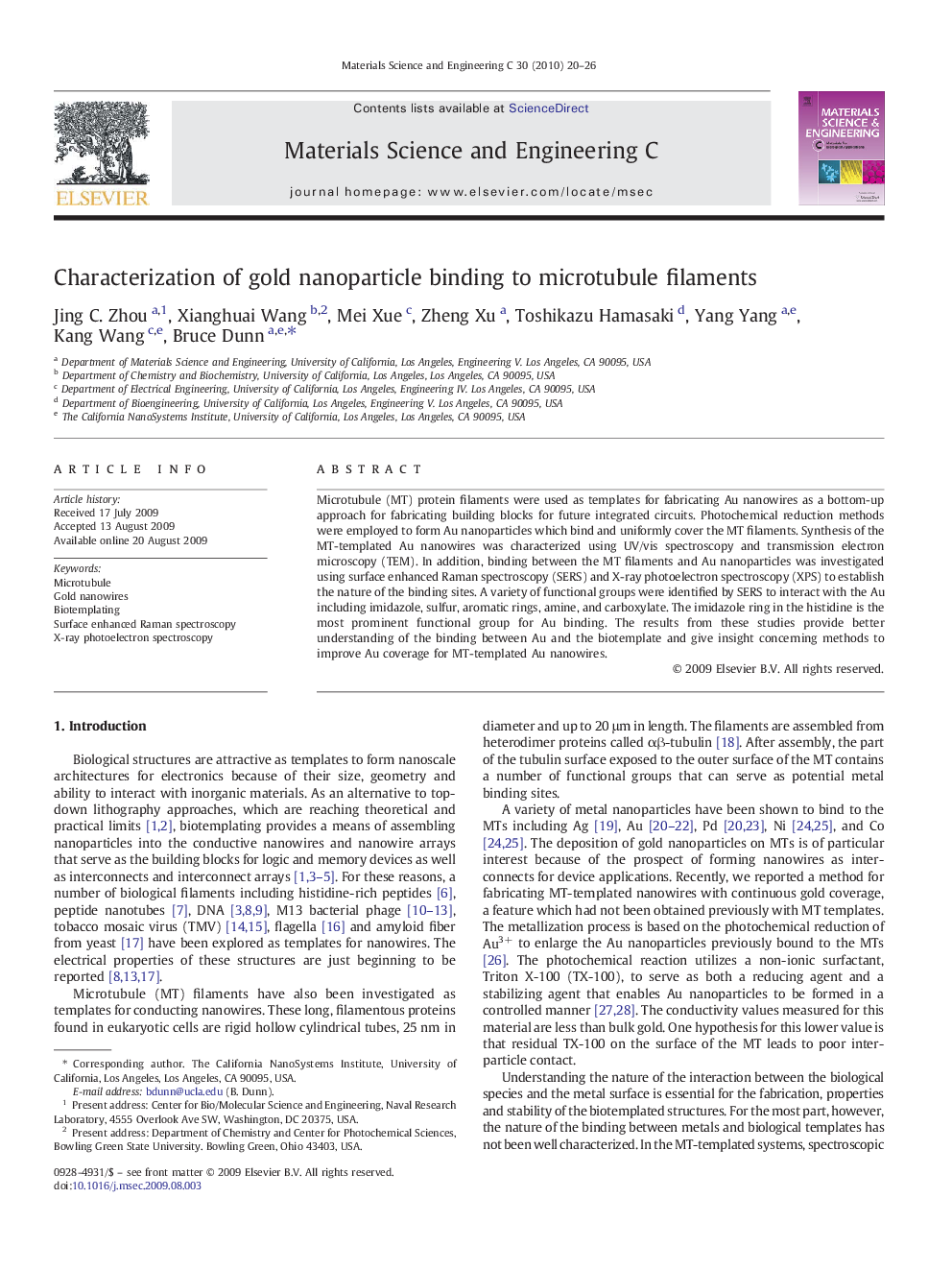| Article ID | Journal | Published Year | Pages | File Type |
|---|---|---|---|---|
| 1430087 | Materials Science and Engineering: C | 2010 | 7 Pages |
Microtubule (MT) protein filaments were used as templates for fabricating Au nanowires as a bottom-up approach for fabricating building blocks for future integrated circuits. Photochemical reduction methods were employed to form Au nanoparticles which bind and uniformly cover the MT filaments. Synthesis of the MT-templated Au nanowires was characterized using UV/vis spectroscopy and transmission electron microscopy (TEM). In addition, binding between the MT filaments and Au nanoparticles was investigated using surface enhanced Raman spectroscopy (SERS) and X-ray photoelectron spectroscopy (XPS) to establish the nature of the binding sites. A variety of functional groups were identified by SERS to interact with the Au including imidazole, sulfur, aromatic rings, amine, and carboxylate. The imidazole ring in the histidine is the most prominent functional group for Au binding. The results from these studies provide better understanding of the binding between Au and the biotemplate and give insight concerning methods to improve Au coverage for MT-templated Au nanowires.
